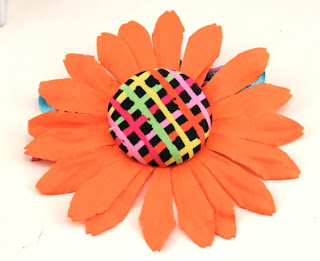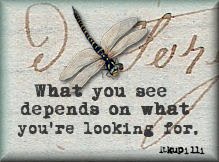The Plaid company Folk Art Enamel Paints are created specifically for painting non-porous surfaces (any glass, metal, ceramic). Folk Art Enamels are non toxic and dishwasher safe (once cured). Before they are dry, the paints can be cleaned up with soap and water which makes working with them easier. This is a completely different type of paint so do not mix or use water with these like you would with acrylics. Additionally, the manufacturer directions say to bake finished items in oven for 30 minutes at 350° or let dry for 21 days to cure completely. After which the piece becomes dishwater safe if put in the top rack of dishwasher.
Here is a list of the Folk Art Enamel Paint colors that I had to work with:
- 4001 Wicker White
- 4017 Lemon Custard
- 4132 Parisian Pink
- 4120 Soft Apple
- 4025 Cobalt
- 4133 Lipstick Red
- 4032 Licorice
So what products work well with these, well there are the Plaid Enamel brushes, the Enamel peel-and-stick stencils and the daubers.
Plaid Folk Art Enamel Brushes
The kit came with Folk Art Enamel brushes which have special soft bristles for using with the enamels so you get better results when using them to paint on non-porous surfaces with the enamel paints. They look and feel like the one-stroke brushes but they serve a different purpose. Look for the light green color (instead of the dark green) on the handle in the painting section of the craft supply stores.
Plaid Folk Art Enamel Peel-and-Stick Stencils
The kit came with these fun floral and the butterfly stencils. They have a sticky back and stick to glass, ceramic, and other non-porous surfaces. They are re-useable at least 20 times. The packaging recommends cleaning them between uses and store them on the mat provided in the packaging. You can use the Plaid daubers or the special paint brushes with these stencils, which makes using them easier to use.
Plaid Paint Daubers Set
The daubers are helpful when using the peel-and-stick stencils. The daubers can be used to apply the paint onto the non-porous surface. The package has several different sizes so you can achieve a variety of results.
Testing the colors
The first step was to check the colors to see how they look on a opaque glass surface. The white background really makes the colors pop.
The third sample shows how the colors look on glass. This give me a chance to see which ones were opaque and which were a little more translucent.
The fourth sample shows the same glass surface on a light source.
This sample really shows how opaque the black and white colors are. The other colors are more translucent and will show brush strokes if I do not apply the paint properly. I think the white background shows the beautiful colors off the best, however, the paint looks good on all the surfaces (depending on my brush strokes).
First Project
My first project is to paint a simple picture frame. I just wanted to see how the paint, peel-and-stick stencils, and the daubers would work on a simple frame. The first thing I did was wash the surface of the frame and let it dry. Then I cleaned it again with rubbing alcohol to remove any oils that might have been on the surface.
I covered the frame with some painters tape so I could measure out the lines for the background of the frame. Then I painted in the white lines. I removed the tape while the paint was still wet. Then I painted in the pink.
I used the multi flower stencil from the floral collection (30459). I placed it on the frame, making sure to press down to secure it before painting the surface of the photo frame.
I used the daubers to paint in the stencils, starting with the yellow followed by
the pink.
Once I removed the stencil I realized the design was too small to work with the large strips that I had previously painted onto the frame. Thus, I decided to wipe off the paint and start over with a different stencil.
Additionally, there is a small learning curve with the peel-and-stick stencils. You should practice on a different item with a similar surface until you get the results you are looking for. Basically it is all about how you load the paint onto the dauber or paint brush.....and how you apply it to the surface. Truly the simplest results are by utilizing the traditional tap technique. Just tap onto the surface, the first tap will be translucent. However, if you want a more opaque result, then you can keep adding layers of color. I also found that by using white (which is a more opaque color) first and then layering the other colors on top of the white, I got results very quickly.
 |
| Repainted with larger flower stencil. |
For my second project, I decided to paint a vase that had a cool design on the glass. I started with the stem.
Then I filled in the rose. I love the fact that this project was done so quickly with great results.
I read on the Plaid website that these enamel paints were great to use with the "One Stroke" painting techniques. So decided to try the one stroke technique out on a glass surface. I started by loading the brush with
Parisian Pink and Wicker White. Then I painted it onto the glass. It looked pretty good.
For my third project,
I decided to see how that technique using the enamel paints would work on a ceramic sugar jar.
So I began with the lid which looked like it could be cool with flower painted onto
it. I used the one stroke technique to blend the two colors together to create petal. It looked pretty good, especially since it was my first try at it.
I then used the dauber to paint the knob yellow. Since I did not have orange, I blended yellow with red to create an orange color to finish off the lid.
I tried the same technique on the side of the creamer.
I did not like the way it looked, so I took a baby wipe and removed the flowers. I decided to paint the rest of the jar with the yellow (Lemon Custard) and pink (Parisian Pink) enamels.
The Folk Art Enamels are available in 38 colors. The colors are rich and fun to work with and can be purchased at larger craft stores or on the Plaid website. I have seen folks paint wine glasses, cookie jars, cake stands, glass dishes, cups, etc. The designs have varied from floral to funky. The Plaid website has some video tutorials of Donna Dewberry painting some quick & easy projects with the enamels.
Tips:
- Shake bottles well before using.
- If you are painting a glass, remember not to paint on the rim or any area that the mouth or food could come in contact with.
- Prepare project for painting by washing with soap and water. Once the surface has dried, then clean area a second time with rubbing alcohol. Allow the surface to dry completely before painting it with the enamels.
- If you don’t like what you made, it is easy soap and water clean up to remove the paint (as long as it is uncured) so you can start over.
- The Plaid website has all types of fun tutorials, including those by Cathie Filian and Steve Piacenza as well as Cathie Filian's own daily blog (of which I am a big fan).































































